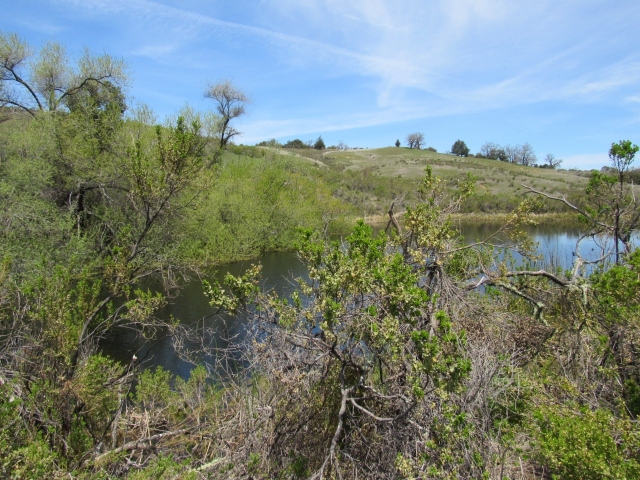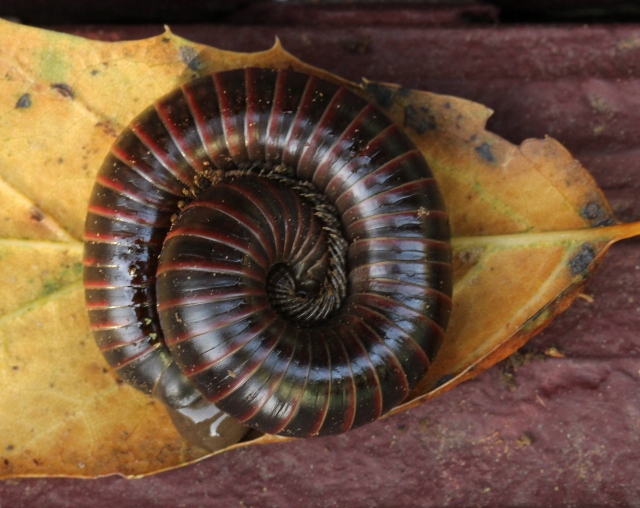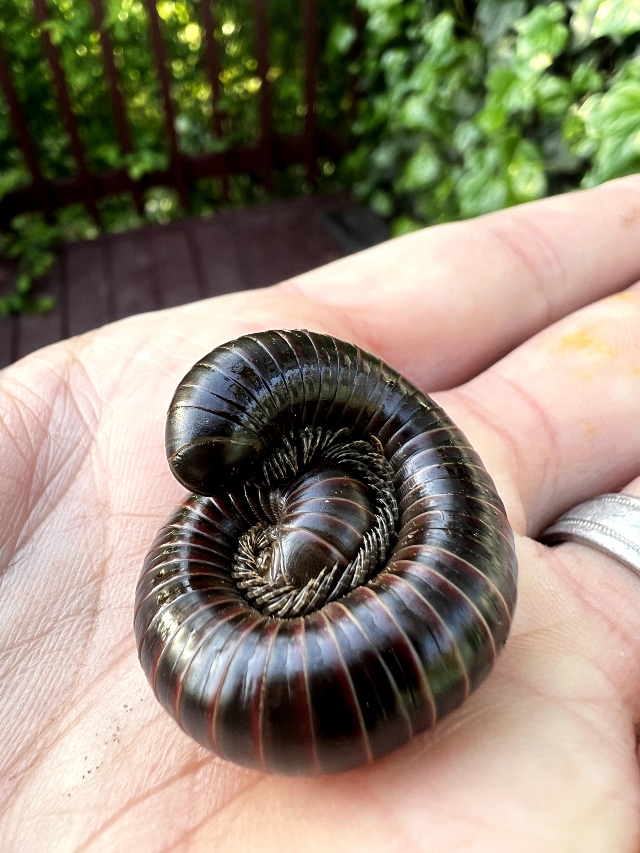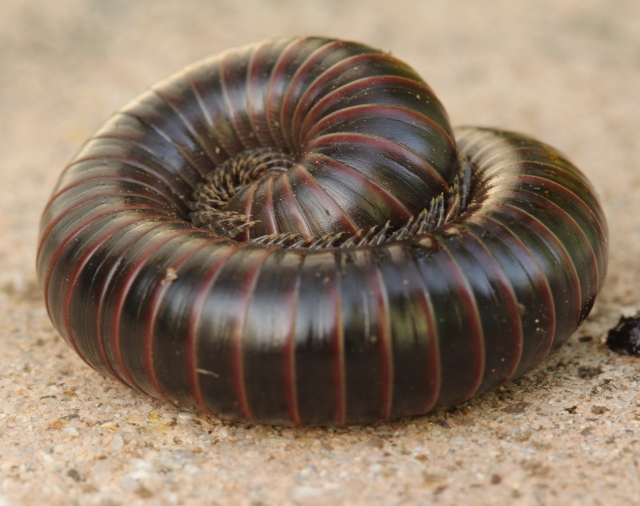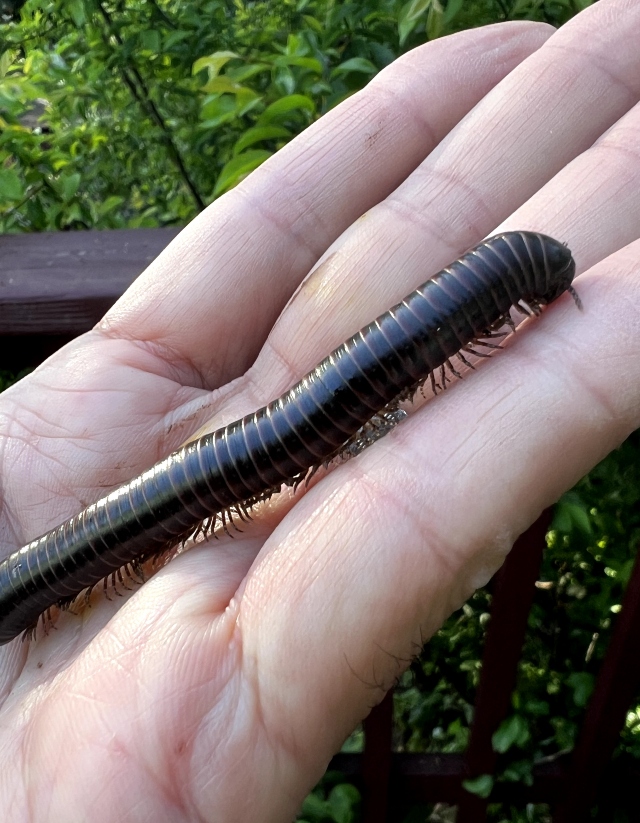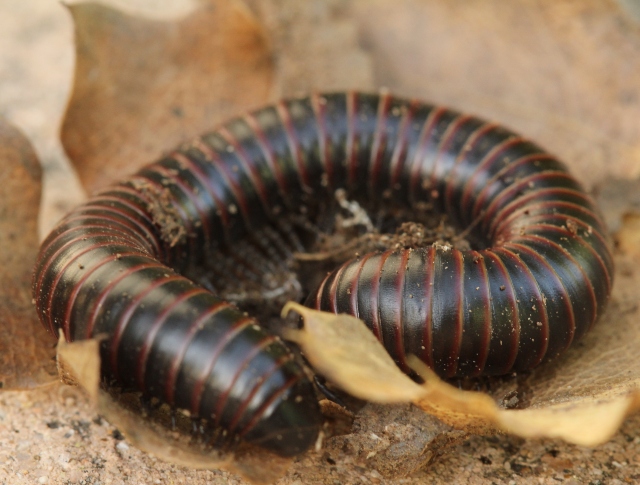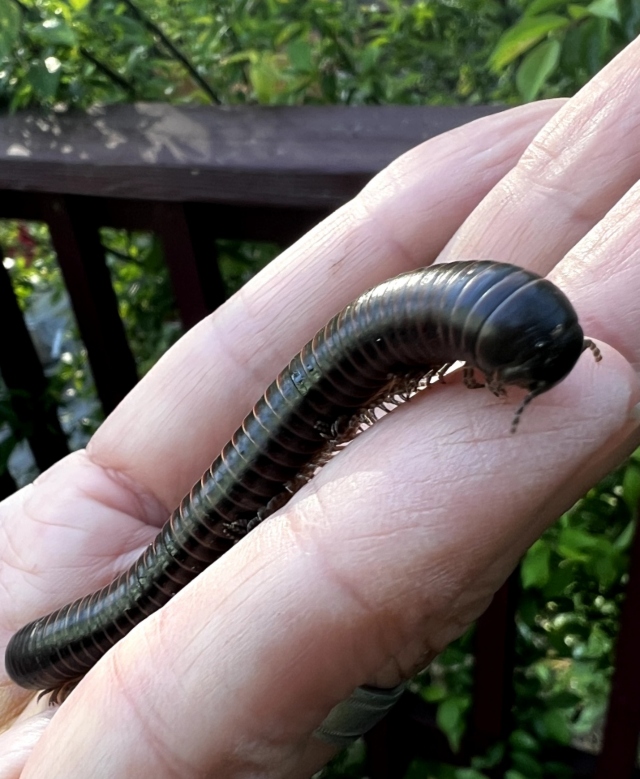This is a species of millipede found in California with no common name. Scientifically its kmown as Paeromopus angusticeps. It occupies the largest geographic range of all four species of Paeromopus, covering much of Northern California in a large arc extending from Monterey County on the central coast, north along the Coast Ranges to Humboldt County, and descending along the Cascades and Sierra Nevada range of eastern California.
Adults possess up to 80 body segments and range from 4 to 6 inches long, and are about a quarter on an inch wide. Their color consists of alternating bands of brown on a black or blue-black base color, although in some individuals the banding is largely indistinct from the base color.
Millipedes are a group of arthropods that are characterized by having two pairs of jointed legs on most body segments; they are known scientifically as the class Diplopoda. The name derived from this feature is “Di” meaning “two” and “poda” meaning “feet.”
Most millipedes feed on decomposing vegetation or organic matter mixed with soil. They often play an important role in the breakdown and decomposition of plant litter.
These creatures are among the first animals to have colonized land, dating the species back 400 million years. Early forms probably ate mosses and primitive vascular plants.
Due to their lack of speed and their inability to bite or sting, their primary defense is to curl into a tight coil to protect their delicate legs inside their armored exoskeleton. Many species also emit foul-smelling liquid secretions through microscopic holes called ozopores.
Millipedes have inspired and played roles in scientific research. In 1963, a walking vehicle with 36 legs was designed, said to have been inspired by a study of millipede locomotion. For me they are always a fun find while out in the field.

